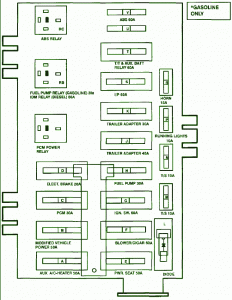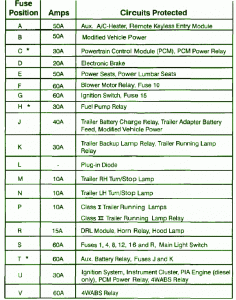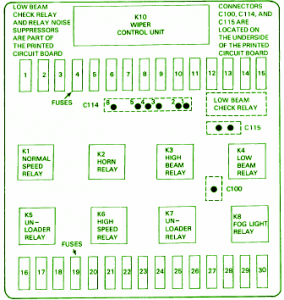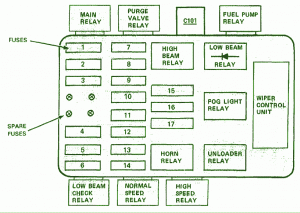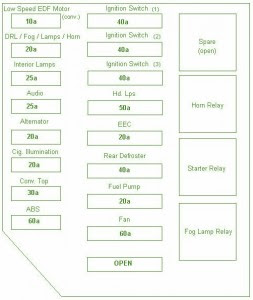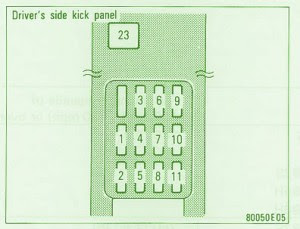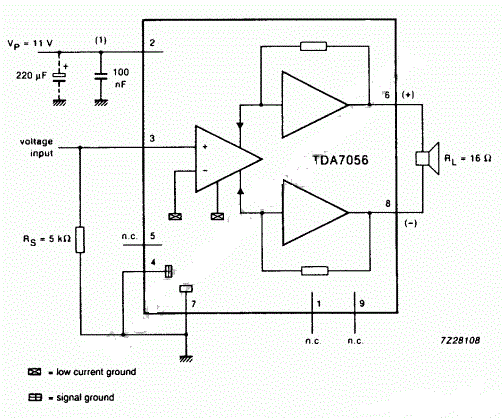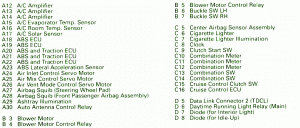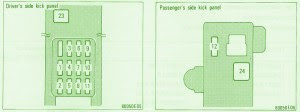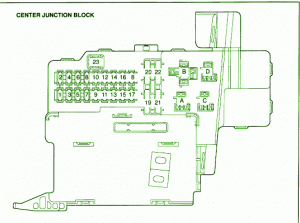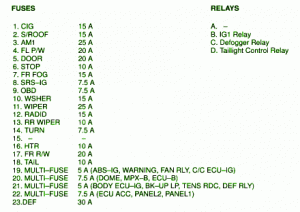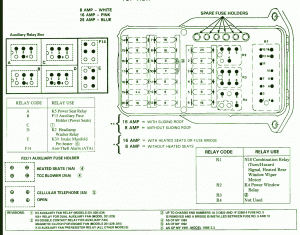This tester uses a LED to indicate whether an inductive sensor is generating a signal. It can be used to test the inductive sensors used in ABS and EBS systems in cars, with engine cam- shafts and flywheels, and so on. The circuit is built around an LM358 dual opamp IC. The weak signal coming from the sensor (when the wheel is turning slowly, for example) is an AC voltage. The first opamp, which is wired here as an inverting amplifier, amplifies the negative half cycles of this signal by a factor of 820. The second opamp is wired as a comparator and causes the red LED to blink regularly.
In order to judge the quality of the signal from the sensor, you must turn the wheel very slowly. If the red LED blinks, this means that the sensor is generating a signal and the distance between the sensor and the pole wheel (gear wheel) is set correctly. If the distance (air gap) is too large, the sensor will not generate a signal when the wheel is turned slowly, with the result that the LED will remain dark, but it will generate a signal if the wheel is turned faster and the LED will thus start blinking. Irregularities in the blinking rate can be caused by dirt on the sensor or damage to the pole wheel (gear wheel).
Tester for Inductive Sensors Circuit diagram:![Tester]()
Tester for Inductive Sensors Circuit Diagram
If you connect an oscilloscope to the LED with the engine running, you will see a square-wave signal with a pattern matching the teeth of the gear wheel, with a frequency equal to the frequency of the AC signal generated by the sensor. You can also use this tester to check the polarity of the connecting leads. To do this, first dismount the sensor and then move it away from a metal-lic object. The LED will go on or off while the sensor is moving. If you now reverse the lead connections, the LED should do exactly the opposite as before when the sensor is moved the same way.
The circuit has been tested extensively in several workshops on various vehicles, and it works faultlessly. The author has also connected the tester to sensors on running engines, such as the cam-shaft and flywheel sensors of a Volvo truck (D13 A engine). With the camshaft sensor, the LED blinks when the engine is being cranked for starting, but once the engine starts running you can’t see the LED blinking any more due to the high blinking rate.

 We then induce a voltage in the secondary winding that is a bit higher than we need, so that we’ll still have a high enough voltage to drive the linear voltage regulator when the battery voltage starts to drop (refer to the circuit in Figure 1). T1 are T2 are turned on and off by an astable multivibrator. We’ve used a 4047 low-power multivibrator for this, which has been configured to run in an astable free-running mode. The complementary Q outputs have a guaranteed duty-cycle of 50%, thereby preventing a DC current from flowing through the transformer. The core could otherwise become saturated, which results in a short-circuit between 6V and ground.
We then induce a voltage in the secondary winding that is a bit higher than we need, so that we’ll still have a high enough voltage to drive the linear voltage regulator when the battery voltage starts to drop (refer to the circuit in Figure 1). T1 are T2 are turned on and off by an astable multivibrator. We’ve used a 4047 low-power multivibrator for this, which has been configured to run in an astable free-running mode. The complementary Q outputs have a guaranteed duty-cycle of 50%, thereby preventing a DC current from flowing through the transformer. The core could otherwise become saturated, which results in a short-circuit between 6V and ground. This makes the construction of the transformer a lot easier. The secondary winding is wound first: 77 turns of a 0.5 mm dia. enamelled copper wire (ECW). If you wind this carefully you’ll find that it fits on one layer and that 3 meters is more than enough. The best way to keep the two primary windings identical is to wind them at the same time. You should take two 30 cm lengths of 0.8 mm dia. ECW and wind these seven times round the core, on the opposite side to the secondary connections. The centre tap is made by connecting the inner two wires together. In this way we get two primary windings of seven turns each.
This makes the construction of the transformer a lot easier. The secondary winding is wound first: 77 turns of a 0.5 mm dia. enamelled copper wire (ECW). If you wind this carefully you’ll find that it fits on one layer and that 3 meters is more than enough. The best way to keep the two primary windings identical is to wind them at the same time. You should take two 30 cm lengths of 0.8 mm dia. ECW and wind these seven times round the core, on the opposite side to the secondary connections. The centre tap is made by connecting the inner two wires together. In this way we get two primary windings of seven turns each. The circuit does not draw any current at all (auto power-off) below 13 V. Pay attention to the polarization of the Zener and IR diodes when building the circuit. The transistor must be fitted to a heat sink, since it becomes hot when the fan is not fully energized (at voltages just below 14 V). A galvanized bracket from a DIY shop forms an adequate heat sink. The indicated component values are for a 10-W solar module. If a higher-power module is used, a motor with higher rated power must also be used. The circuit takes advantage of the positive temperature coefficient of the lamp filament. The filament resistance is low at low voltages and increases as the voltage rises. This reduces the speed of the fan to avoid generating an annoying noise level. The lamp also provides a form of finger protection.
The circuit does not draw any current at all (auto power-off) below 13 V. Pay attention to the polarization of the Zener and IR diodes when building the circuit. The transistor must be fitted to a heat sink, since it becomes hot when the fan is not fully energized (at voltages just below 14 V). A galvanized bracket from a DIY shop forms an adequate heat sink. The indicated component values are for a 10-W solar module. If a higher-power module is used, a motor with higher rated power must also be used. The circuit takes advantage of the positive temperature coefficient of the lamp filament. The filament resistance is low at low voltages and increases as the voltage rises. This reduces the speed of the fan to avoid generating an annoying noise level. The lamp also provides a form of finger protection.